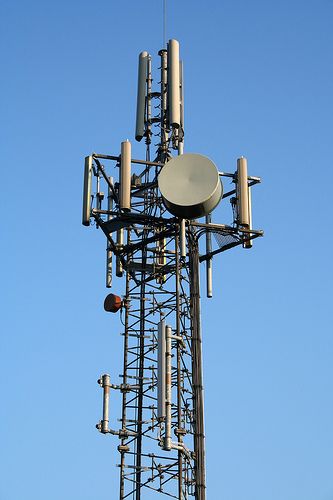

A mobile phone mast is the interface between the wireless part of the network and the base station, the backhaul network and beyond to the core network.
Most masts can be seen with more than one aerial, and many of the larger masts double up with other communication systems be they TV or emergency services. For the mobile phone network, some masts will have aerials from more than one operator, O2 and Vodafone regularly share masts, as do THREE and EE. In addition these masts will be able to connect 2G, 4G and 5G networks. Although not all masts can cope with all networks.
Some masts are at the centre of their cell, and host an omnidirectional aerial, allowing connection from all directions. More often the aerials are tuned to cover a 120deg arc, thus 3 aerials will be seen around the mast. These, together with other masts make up the traditional hexagonal cell shape for coverage. However the real world of geographical features get in the way and these cells are not perfect hexagons.
Along roads and railways the masts used are more tightly tuned to focus the signals up and down the road or railway. Often these masts may only have two sets of aerials, pointing up and down the road or railway.
Masts are of different sizes and located in various different locations. From large (high) masts set on top of hills, to similar, but shorter, masts in towns, to masts on prominent buildings, to smaller masts mounted on street furniture.
© mobilephonetechnology.co.uk all rights reserved 2017-2025
